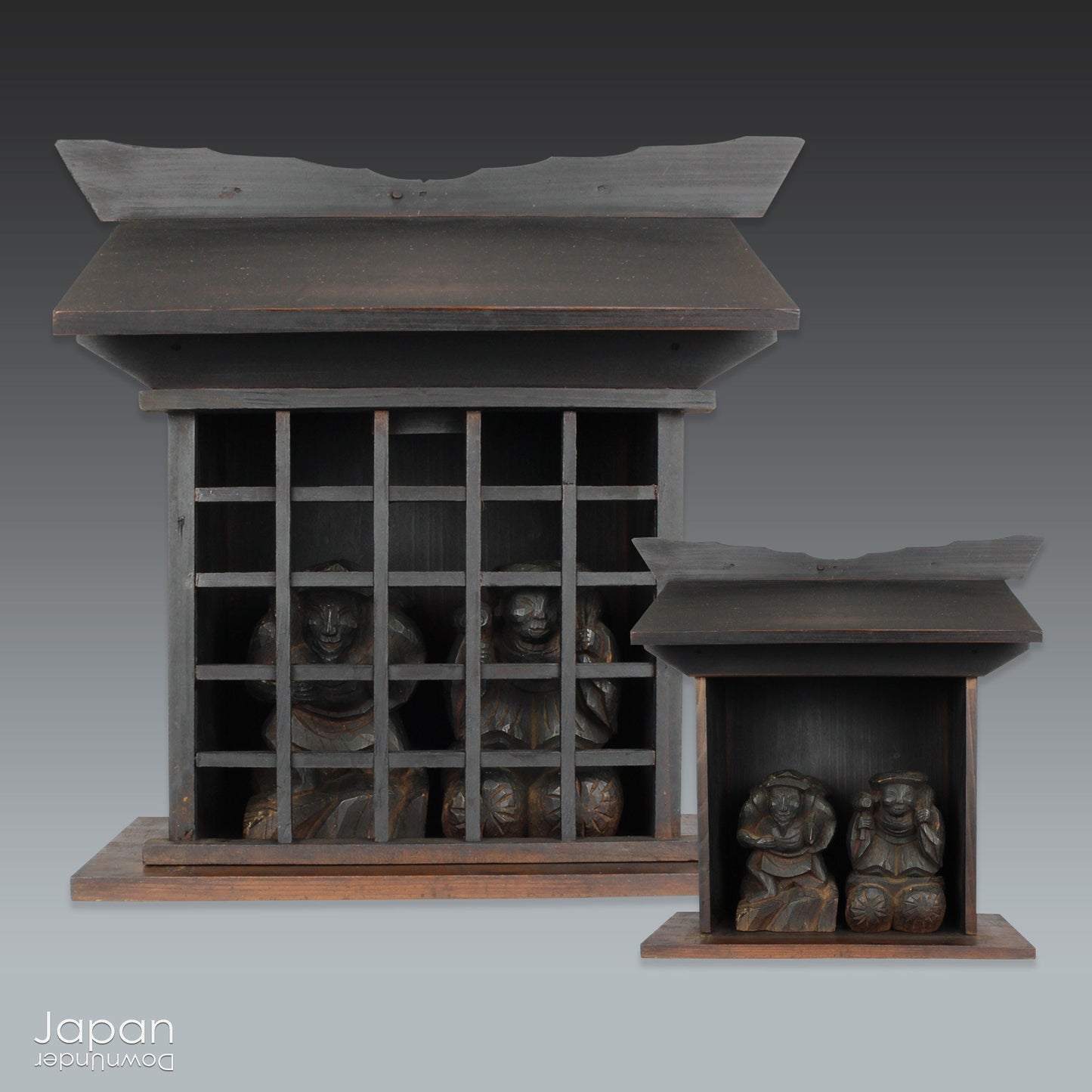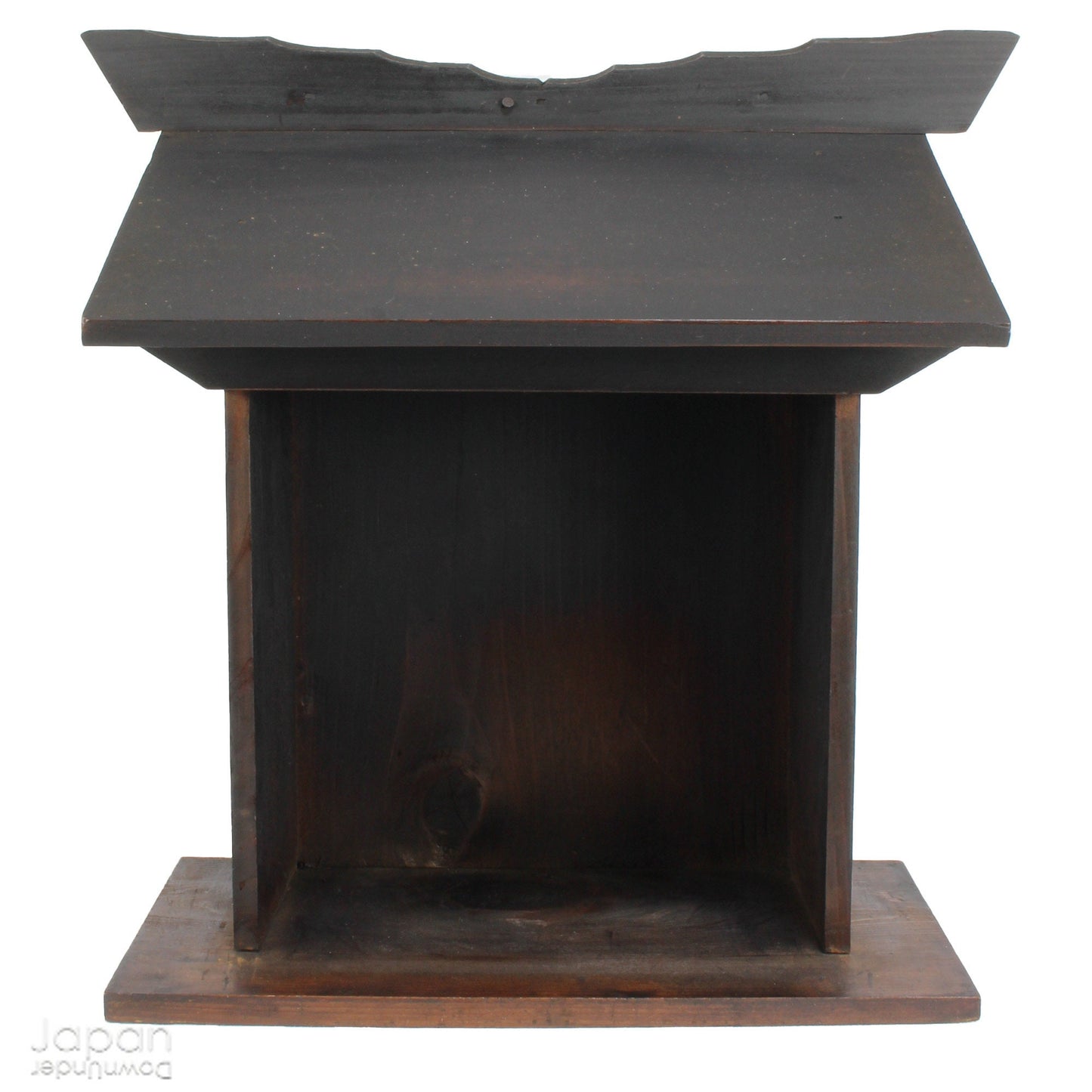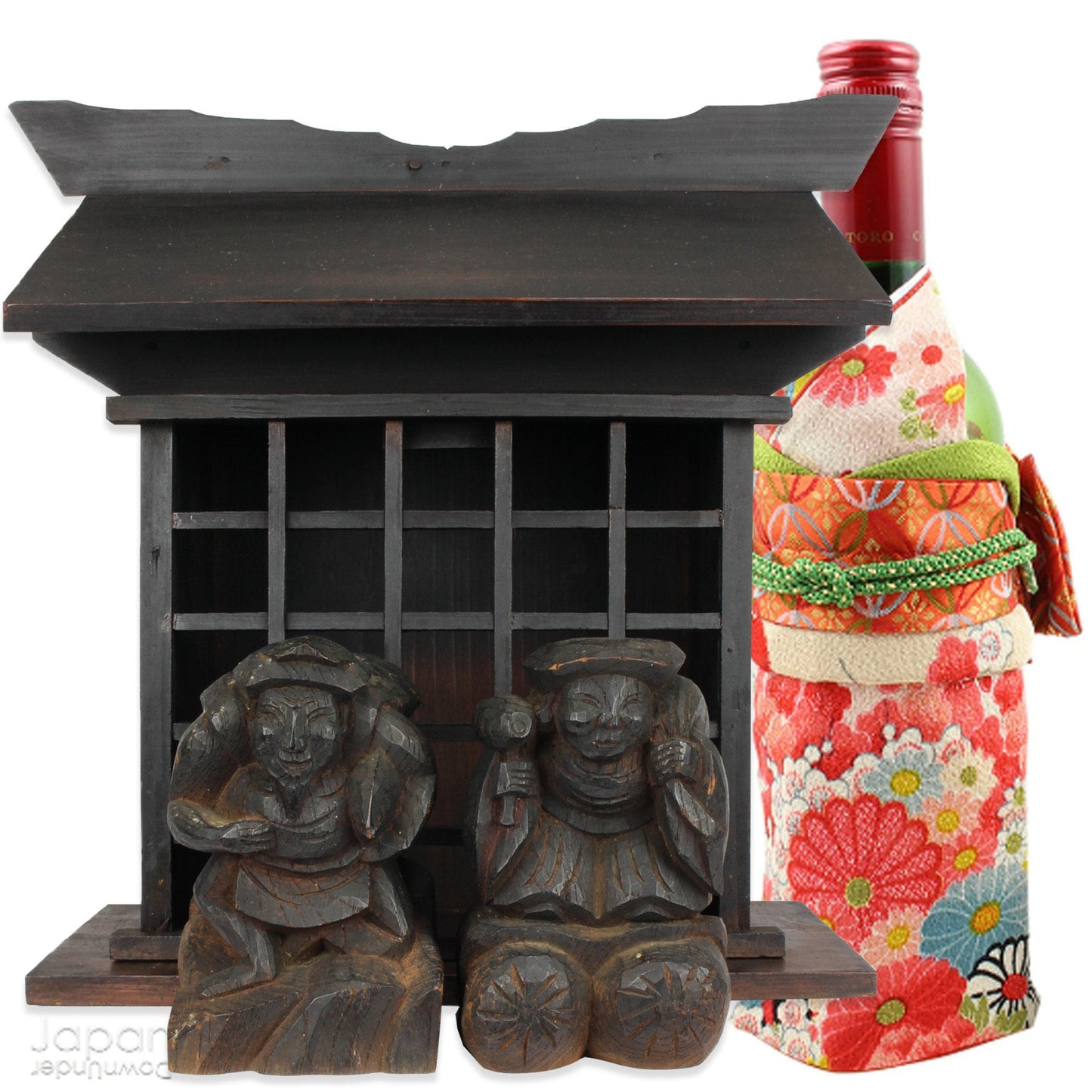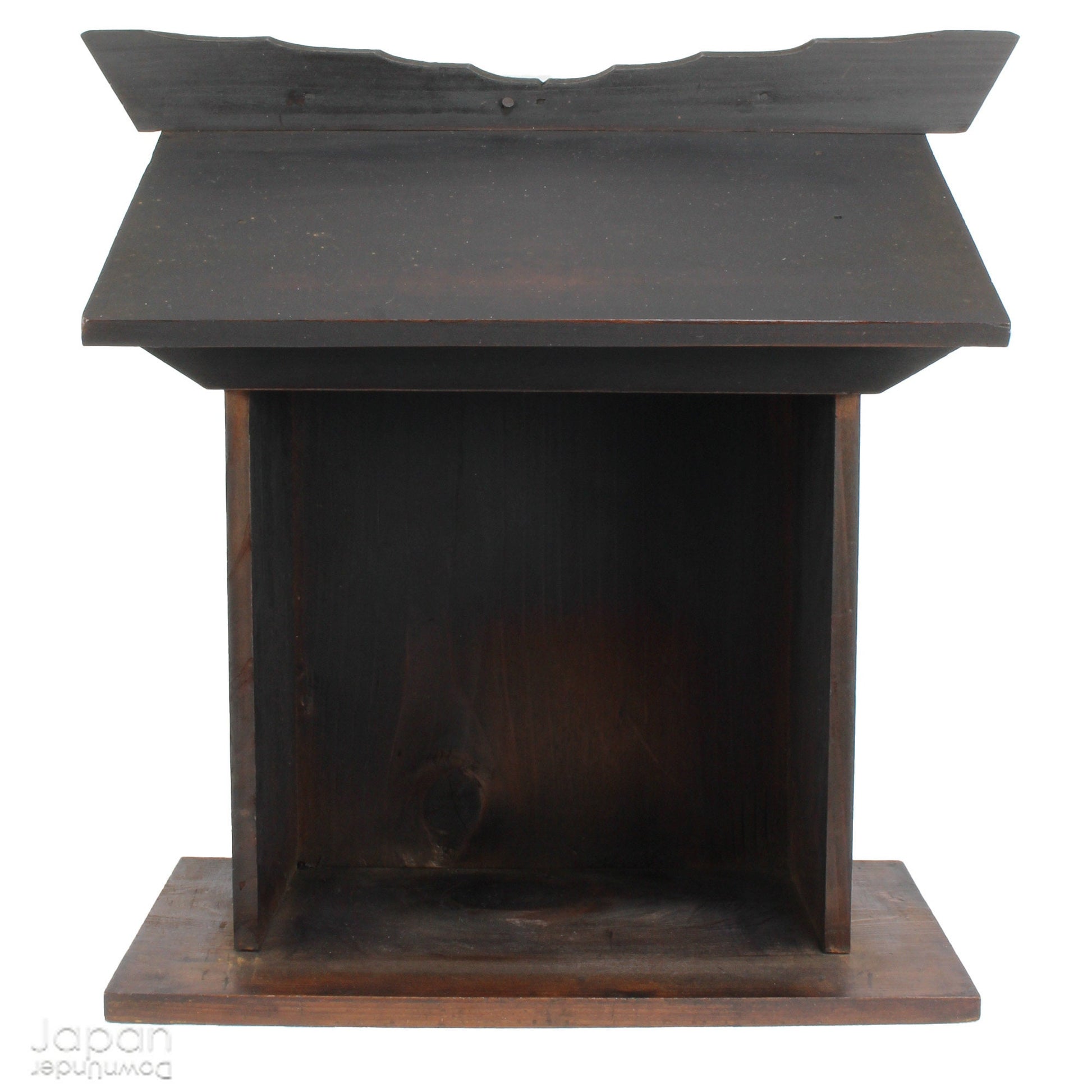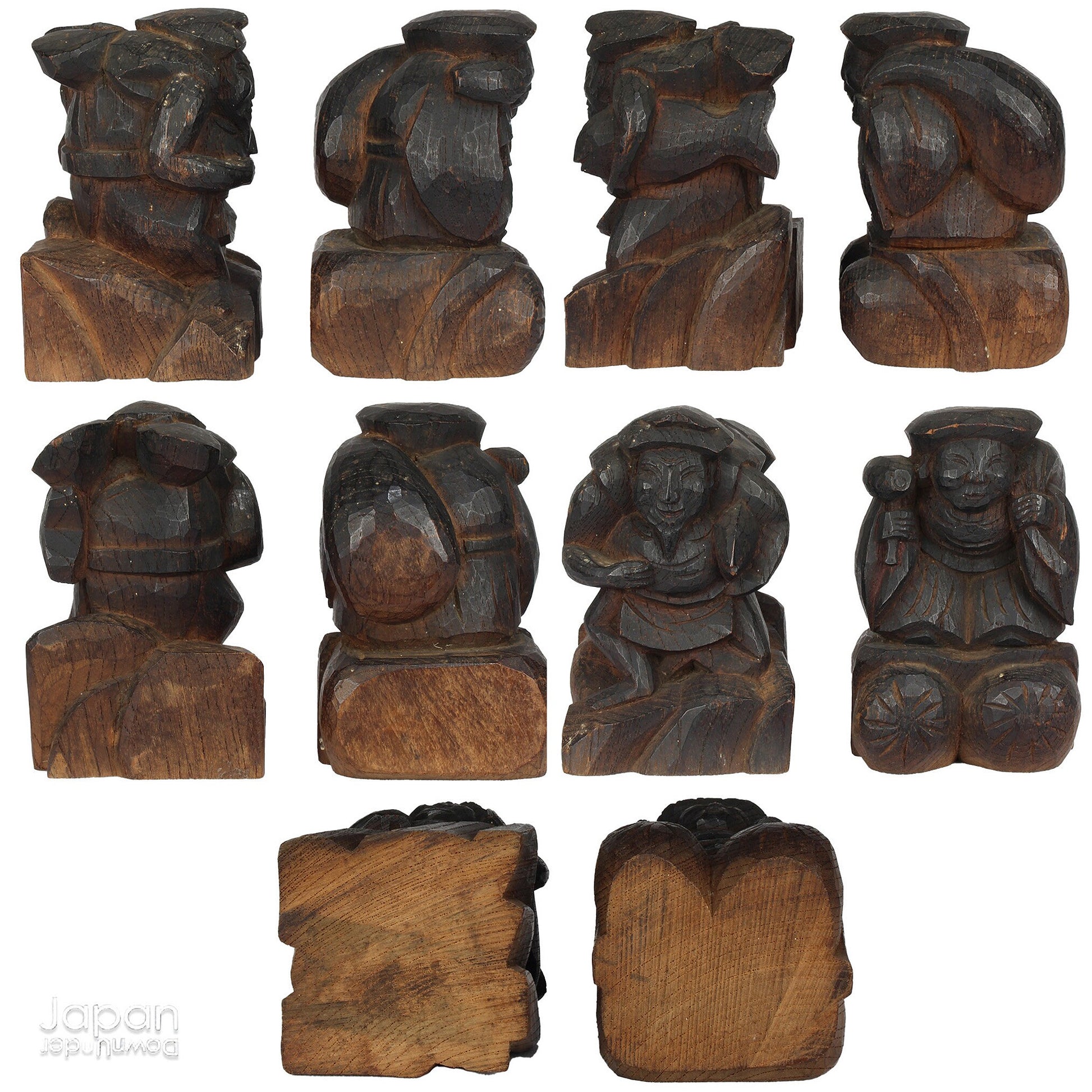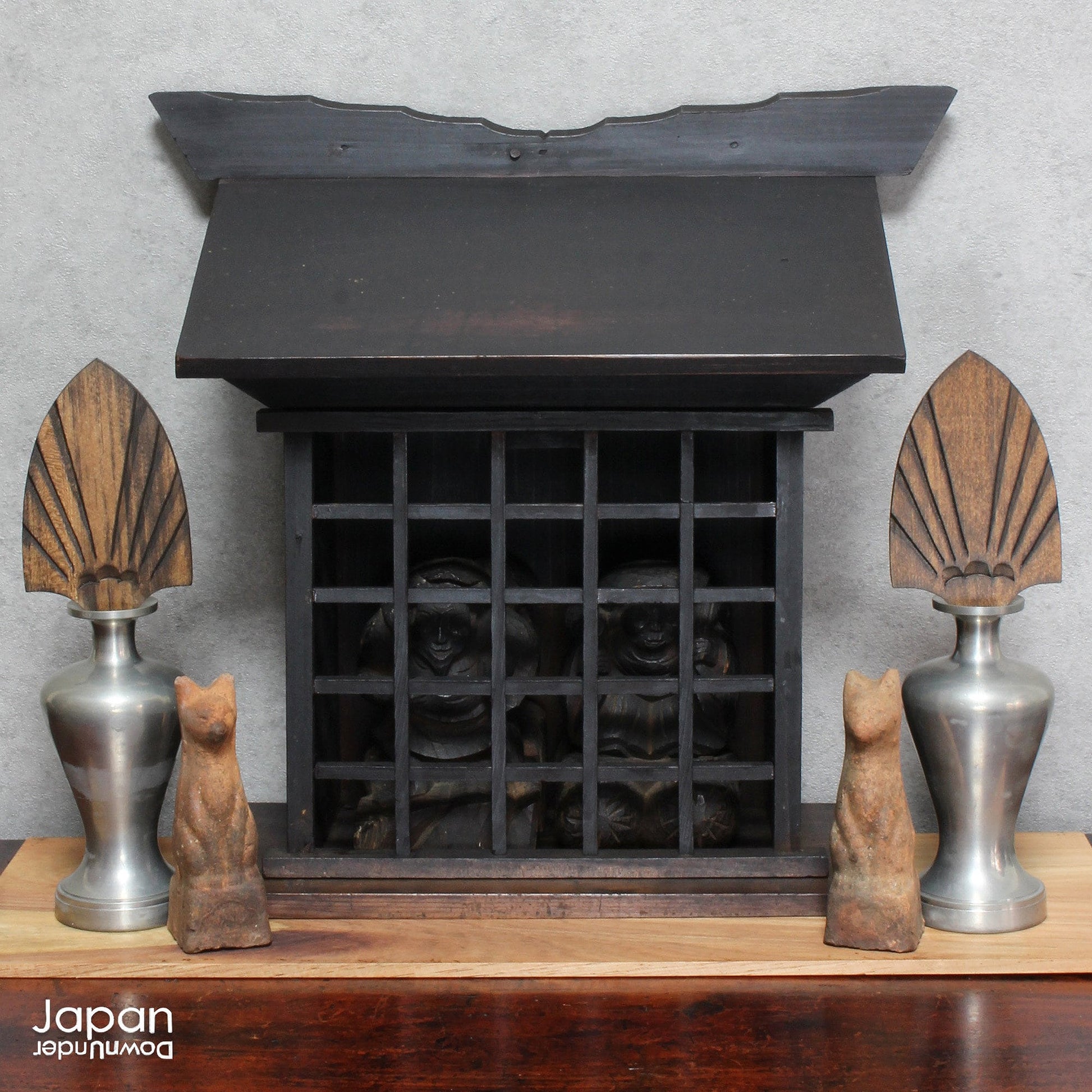My Store
japanese antique kamidana shinto shrine with ebisu and daikoku - spiritual folk art
japanese antique kamidana shinto shrine with ebisu and daikoku - spiritual folk art
Couldn't load pickup availability
Love Japanese Style Like We Do
Bring a piece of living history into your space with this beautifully aged Shinto folk shrine, dating back to the early 1900s. Traditionally used on a kamidana (god shelf), this compact yet meaningful antique is perfect for creating a sacred corner in your home. Inside, you’ll find the beloved kitchen gods, Ebisu and Daikoku, powerful symbols of prosperity, protection, and good fortune.
In old rural Japan, these two deities were enshrined in the kitchens of country homes, placed alongside a household kamifuda (spirit tablet). Known affectionately as the "kitchen gods," Ebisu - protector of fishermen - and Daikoku guardian of farmers - were honored daily with prayers, candles, and offerings. Their presence was believed to bring abundance, good health, and household happiness.
This shrine is crafted from aged Japanese hinoki cypress, prized for its durability and sacred association. It features a classic box design with a gently sloped roof and a shoji-style kumiko panel at the front, offering a delicate peek at the figures within. The front panel can be removed by sliding it upward and out at the base - typical of traditional kamidana design.
Time has lent the wood a deep, mellow patina, enriched by subtle wear from decades of reverent use. While there are some knocks and age marks, the structure remains solid. The kumiko panel is built without nails or glue, and though some slats have loosened slightly from natural wood shrinkage, this only adds to its authenticity.
Inside the shrine are two wonderfully expressive hand-carved statues of Ebisu and Daikoku, crafted from heavy keyaki (zelkova) wood. Their surfaces are richly darkened with decades of kitchen soot - a condition highly prized in Japanese folk art for the warmth and spirit it represents. Ebisu holds his lucky tai fish, while Daikoku stands atop rice bales with a large sack of gold slung over his shoulder. Each figure carries a distinct personality, their facial expressions full of life and charm. A small age crack on Daikoku’s left side near the rice bales is discreet and does not detract from his overall presence.
Whether you’re a collector of Japanese mingei (folk craft), a lover of spiritual objects, or someone seeking a meaningful piece to enrich your home, this shrine offers both cultural depth and quiet beauty.
A rare and soulful artifact of Japan’s spiritual heritage - ready to bring protection, serenity, and good fortune into your home.
- god house measures around 28 cm (11”) tall x 30 cm (11.8”) across x 13 cm (5.1”) deep.
- gods measure 11 cm (4.3”) tall x 7 cm (2.7”) across x 6.5 cm (2.6”) deep.
- total weight 950 gm.
(listing for god house and two gods only)
SHIPPING INFORMATION
- please read our shipping policy.
- we use recycle packaging and wrap for safety, rather than appearance.
ABOUT OUR VINTAGE, ANTIQUE AND OTHER ITEMS
We list pieces we feel are worthy of display. There may be scratches, dents, fading and signs of wear and tear. We try to explain the condition of each item exactly, but may miss something.
Information regarding the item and it’s age is obtained from dealers and our personal research. We do our best to give you the correct information but please be aware that we cannot guarantee this information.
Please message us prior to purchase with any questions you may have about our products.
KAMIDANA
Kamidana, literally god shelf, or sacred shelf, are miniature household altars used to place an enshrined Shinto kami (god). Paper talismen, kamifuda and amulets, issued by the major Shinto shrines, were enshrined for worship to the kami. They became popular in traditional country style minka houses.
Small shrines for tutelary deities, inside a residence, go back to ancient times among the aristocracy. The emergence of the kamidana was closely connected with the development of the domestic Buddhist altar or butsudan, which started the movement of conducting religious rituals in each household.
Kamidana were initially set up to keep Jingu Onusa, charms of the Grand Shrine of Ise, when they began to be widely distributed at the end of the Muromachi period. The Jingu Onusa symbolized Amaterasu Omikami and were considered objects of worship. A special domestic shelf, to respect these charms, was installed and was called Jingu no tana, or shelf of the Grand Shrine. By the mid-Edo era, the institution of the kamidana had spread to most homes as a result of the spread of this Ise cult.
The most common style of kamidana was a plain board forming a shelf, supported by cantilevered brackets from beneath, or stabilized with timber hangers, suspended from the beams above. On this shelf a miniature Shinto shrine was installed to contain the kamifuda. This shrine could be elaborate in design, but unlike the miniature shrine cabinet, or zushi, of the Buddhist altar, the timber was unlacquered. The kamifuda enshrined was that of a clan deity or came from one of the major national shrines.
Kamidana were most often located in a high place, thought to be closest to the heavens and gods, in an area close to an earth floor. As old country kitchens had an earth floor and were a place where many people gathered, they were perfect for the kamidana and prayer. Candles were lit and offerings of rice, fruit, fish, rice and wine were made daily.
Particularly in the homes of farmers, fishermen, merchants and other craftsmen, additional deities with combined Shinto and Buddhist identities found their way to the kamidana. Ebisu and Daikoku-dana were popular. Ebisu, the god of fishing and Daikoku, the god of farming, were particular favorites amongst country folk, whose livelihood depended on agriculture and the ocean. Ebisu and Daikoku were often housed together in a special shrine with a rounded roof, and came to be known as the kitchen gods. Kojin-dana was another popular choice. Kojin was the god of domestic tranquility and good fortune. Inari-dana were also seen. Inari is the Japanese Shinto god who watches over and protects the rice harvest. A temporary toshitoku-dana was set up in almost all homes at the end of the year to welcome and worship the kami of the New Year.
Old Kamidana shrines are a wonderful example of Japanese mingei; a spiritual tool that reminds us of culture and customs of the past.
KITCHEN GODS-EBISU AND DAIKOKU
Ebisu and Daikoku are known as the lucky kitchen gods. They were placed on a shelf high up in the kitchen and given daily offerings to bring good fortune into the home.
Ebisu is known as the God of commerce and prosperity, the ocean and fishing. He is the guardian of all occupations. He holds a fishing rod in one hand and a big snapper under the other arm. A red snapper is eaten at all happy events in Japan. Ebisu will make sure you always have plenty of money, success and food.
Daikoku is the God of wealth and good fortune, and of farmers and food. He is a cheerful, chubby God, standing on bales of rice. He has a sack of treasure slung over one shoulder and a magic mallet, that fulfills all wishes, in the other hand. Put him in your home and you will always have good fortune, money and lots of food.
MINGEI
Mingei are the tools and utensils that were used daily by the common people in Japan. They were inexpensive, simple and functional. Usually produced by hand, in large quantities, their artists were anonymous. They became representative of the local area where they were produced.
The word Mingei combines “min” meaning common people and “gei” meaning art - the art of the common people. It was coined by the Japanese philosopher Sōetsu Yanagi. He found beauty in ordinary crafts for daily use and argued that true beauty could be found only in the objects made by unknown people, in a spirit of selfless innocence and in close harmony with nature.
Share
